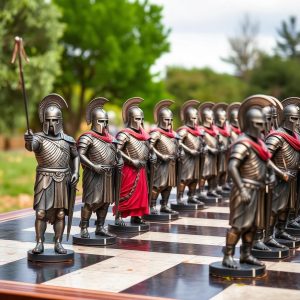 By KEN KORCZAK
By KEN KORCZAK
The human ego is a fundamental & necessary element of the modern human psyche
Not so long ago, when people screwed something up or when they acted in some noxious, destructive manner, it was common to hear them say:
“The Devil made me do it.”
But today, what we hear more often is:
“My ego made me do it.”
This is especially true among New Agers, consciousness explorers of various kinds, and individuals pursuing a path in Eastern philosophy.
Even guys I admire to the Nth degree, like physicist Tom Campbell, hammer away at the follies of the ego. Taking a science-based approach, leveraging computer science theory, Campbell has developed a model that posits we are living in a virtual reality and that our “ego selves” are actually “avatars” playing at this game we call “life.”
Campbell routinely cautions his many fans & followers about the dangers of letting our egos get the best of us, leading to the corrosive effects of what he calls “greater entropy” created in both our personal lives and within the overarching virtual reality scenario itself.
Campbell advises us to “lower our entropy” and to “grow toward love.” He says living a “loving and non-self-centered life in service to others” is the best way to move and away from the constant needs, wants, grasping and desires of the ego.
Similarly, people who follow a Buddhist path are eager to “extinguish the false ego construct” so that our greater “Illuminated Self” or “Higher Self” can emerge, allowing us to live closer to a state of detached bliss and “natural living” free of ego-based delusions, and so forth.
I don’t disagree with any of this. However, my suggestion is that our culture has reached a point where the emphasis on the “evils of the ego” has been overplayed. At worst, we have exchanged the word “Devil” for the word “ego,” coming full circle to adopt a simplified Christian-like or even Zoroastrian-like philosophy of good vs. evil, the Devil vs God,” and “living in the light” versus “falling into the darkness of sin.”
THE EGO IS NECESSARY
After 44 years of Zen meditation practice, I have realized that, even if one’s current ego is “extinguished” — and I’ve found that it can be — the result will be for the psyche to just go ahead and set up a new and slightly different ego structure.
A good example of this might be the famous spiritual teacher and author, Eckhart Tolle, another person I admire greatly. I’m satisfied that Eckhart is a genuine “illuminated individual” and has achieved some form of enlightenment. He is a wonderful and important teacher for our times, as is Tom Campbell. However, both these men continue to operate in our material-based reality with an ego-based personality.
Consider that Eckhart Tolle’s birth name was Ulrich Leonard Tölle. After his dramatic self-realization event when he was 29 years old and a deeply depressed man on the verge of suicide, he re-emerged from his enlightenment experience and changed his name from Ulrich to Eckhart, and he also dropped his middle name and umlaut from his last name, going from Ulrich Leonard Tölle to just Eckhart Tolle.
In effect, he shed his former, depressed and malfunctioning ego known as “Ulrich” for a new, lighter and happier ego construct now called “Eckhart.”
Indeed, Tolle himself does not claim to be without an ego. However, he teaches that it is best to switch one’s focus away from any ego we might have in favor of operating from an “awakened state beyond the ego.” I’ll also note that Tom Campbell, when answering questions in an online forum, was asked if he still had an ego. He said, “Yes, I still have an ego,”
The bottom line is that Eckhart and Tom still have an ego — and they still need an ego to function here — and so do I — and so do you.
I think a better way to understand why we need an ego, and why an ego is not a “bad thing,” is to look back over tens of thousands of years of human history and examine the evolution of consciousness that has occurred over eons of time.
To get at this, I will reference the philosopher Ken Wilber, and specifically, his book, Up from Eden: A Transpersonal View of Evolution, and also Julian Jaynes and his book, The Origins of Consciousness in the Breakdown of the Bicameral Mind.
A TIME BEFORE THE EGO
If you think about it, there must have been a time when human beings did not have the same kind of minds or “brand” of consciousness that we have today.
For example, imagine what it would be like to have no personal ego identification. Can you? Imagine being a human creature that is more akin to a herd animal, where each individual takes its cues and thus acts only in accordance with the collective instinctual behavioral activities of the group.
In this scenario, rather than framing reality in terms of “I” or “me,” your identity is dominated by the collective mentality of all “the bodies” that make up your species set. In other words, there is no “you,” so to speak. Each member of a herd “is” the herd.
This is just one element of the human condition that may have existed in the distant past among groups of hominins, including Homo sapiens, according to Ken Wilber.
He suggests that the individualized human ego did not exist in the very early emergent days of humankind, but that an ego structure evolved over millions of years.
Today, when our scientists and philosophers discuss human evolution, they do so almost exclusively in terms of biological changes. Thus, the rest of us have become accustomed to framing evolutionary concepts in terms of specific changes that occurred in physical form over millions of years, especially the brain.
What generally gets left out, however, is that it wasn’t just the physical brain and body that evolved. Our subjective “mind” and “consciousness” evolved and changed along with the trend toward larger brain size among hominins.
Consider that the prevailing theory among mainstream science is that the brain among hominids has grown progressively larger over millions of years.
For example, recovered skulls of Homo habilis show these early hominins had a brain size of about 650 cubic centimeters. A later species, Homo erectus, sported a 900cc brain. Then Homo heidelbergensis emerged with a 1,100cc to 1,400cc brain — the latter was from 93% to 100% of our modern Homo sapiens brain, which today is from 1,400 to 1,595 cubic centimeters.
Side note: Some “close cousins” of modern man, Cro-Magnon and Neanderthal, had larger brain sizes. Neanderthal brains averaged 1,400cc to 1,750cc. Cro-Magnon folks had brains averaging 1,600cc. This begs the question of how important brain size is in the grand scheme of things, but let’s put that aside for now.
Again, because of all this focus on brain size and other physical changes in hominin physiology, people are comfortable with the idea that we have evolved biologically as a species, but fewer people make the leap that the physical body is not the only element of humanity that has evolved. In other words:
Throughout the countless millennia — the human mind — the consciousness mode of our species — must have also undergone enormous transformation and a type of subjective, non-physical evolution in addition to physical changes in the body.
That which we all recognize as “our ego” or “the ego” at one time did not exist in the people who roamed our Earth. Some have suggested that even the ancient Greeks or Egyptians may have been societies where full ego realization was not universally present.
In his marvelous book, The Origin of Consciousness in the Breakdown of the Bicameral Mind, Julian Jaynes suggested that even the early Greeks of about 1,000 B.C. lacked a fully developed sense of self, the self-reflective ego that we recognize today.
Jaynes proposed that these early Greeks appear to display “externalized guidance” and show almost no sense of “introspection” as evidenced by a lack of “self-reflection” in the text of the Iliad.
Jaynes said the characters in the Iliad seem more like “pawns being pushed around a chess board” rather than individuals taking action based on their own, personally designed goals and initiatives.
Jaynes also suggested that those “voices” the Greeks attributed to “the gods” were actually the pre-emergent ego that was ramping up inside the evolving collective psyche of man but had not yet fully crystallized.
With this in mind, let’s go back to Ken Wilber. He proposes several distinct stages of consciousness development that led humankind from a state of “no ego” to “evolving an ego construct” because there was a specific need to do so if we were to advance as a species.
I will briefly describe Wilber’s stages of development, noting that I have selected just three of Wilber’s categories. His overall thesis included more stages and substages, but for the sake of brevity, I’ll just give three broad categories here:
- The Pleromatic-Uroboric
This is an era when “people” were a species of primate who gathered and scavenged for food to survive, much like most other animals.
In the Pleromatic-Uroboric framework, the individual hominid cannot distinguish the difference between his or her inner experience and outer reality. In a sense, “people” are embedded in a kind of “unconscious consciousness.” They function like animals, concerned with finding something to eat, staying warm, having sex — just getting along and surviving.
Then, Wilber suggests that human minds somehow advanced or evolved beyond the Pleromatic-Uroboric over eons of time. Eventually, the mind transcends to the next stage of development, which he calls the:
2. Typhonic Stage
This is an amazing advancement, since the individual is now able to see himself or herself as a separate entity from the rest of nature. The individual now has the new ability to think: “This is me, that is not me.”
But there is still no ego.
The typhonic era is still a long way from an individual having the sharp distinction of being a “special” individual with a unique identity. It’s more like a blurred stage that might be described as dreamlike. The individual is moving along in an exterior world, distinct from it, yet partially absorbed in it as well. There is still no true language.
And so, the march of human evolution continues: The next stage is the:
3. Mythic Membership
In the new Mythic Membership era of psychic evolution, we have finally worked our way up to a place where individual “modern ego” structures can emerge among the masses. Finally, a man or woman can stand up and say: “I am me!”
Note that Wilber suggests there might have been variations within each stage, such as a ‘lower ego’ stage in which a sense of individuality has emerged but still views itself or strongly associates with the group.
Wilber makes the case that humanity has been on a journey of hundreds of thousands of years evolving “upward” from a lowly unconscious-conscious state to higher forms of self-knowledge and awareness — and naturally, we can’t conclude that we are at the journey’s end.
Just as we transcended — and absorbed and incorporated all the lower stages — we are now striving today to transcend our primary and dominant ego-based consciousness toward a further, higher transcendent mode of shaping our reality.
WE DID NOT ABANDON THE LOWER STAGES, WE ABSORBED & INCORPORATED
Itis extremely important to emphasize that as the human race worked its way beyond each stage of development, the previous “lower state” was not abandoned or wiped away in favor of higher stages of greater self-reflection and awareness.
For example, when humanity moved beyond the Pleromatic-Uroboric and entered the era of the Typhonic, the Pleromatic-Uroboric remained as a fundamental part of the entire structure of the collective psyche. Without the lower level to underpin the new level, the latter would have no foundation to rest upon.
This is exactly why we can’t simply “extinguish the ego” today — we can’t simply abandon the ego to live in a state of “illuminated enlightenment” because this higher state of being would not have a platform “to self-reflect upon,” so to speak.
Think of your ego as a necessary part of a foundation that underpins a complex, layered self-aware consciousness structure that has been self-erecting itself over millions of years of both physical and consciousness evolution.
This whole situation might be mirrored in the physical structure of the brain itself. For example, science tells us that the “most primitive” part of the brain is the brainstem. It handles the essential life-sustaining functions, such as breathing, heart function, digesting food and more.
Perhaps the “next most primitive” part of the brain is the limbic system. Sometimes referred to as “the lizard brain,” the limbic system nevertheless builds upon the brainstem and adds capabilities to our human function. For example, the limbic system is responsible for memory, emotions, motivation, social behavior and more.
Higher still in the brain structure hierarchy is the neocortex, which handles advanced abstract thinking, reasoning, language and more.
So — you see how this works? It’s easy to understand that a neocortex without the underpinning of a brain stem and limbic system would not be a viable brain at all.
In the same fashion, what we experience as an ego is an integral part of consciousness; it is fundamental and necessary to who we are today and where we are going tomorrow. Without an ego — which is resting upon the uroboric, the typhonic, and the mythic membership stages — we would be unable to achieve the even greater, transcendent stage of human development that is emerging among the global population at this time in history.
JOIN ME ON BLUESKY: KEN-ON-BLUESKY
NOTE: For more stories on the nature of consciousness, please see: KEN-ON-MEDIUM
